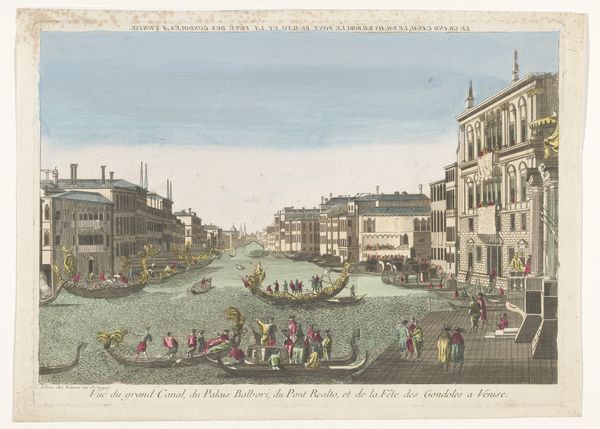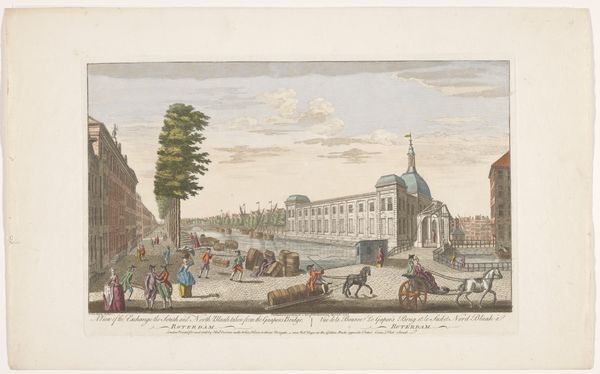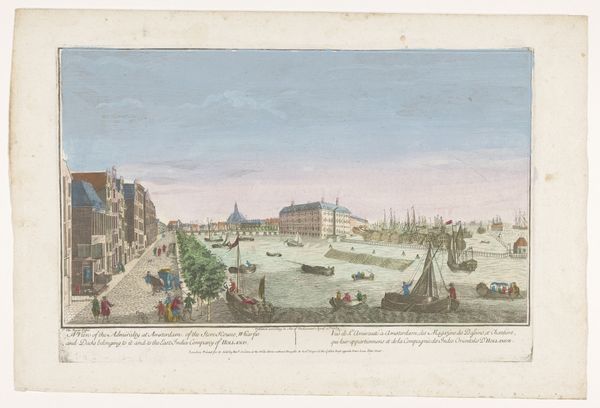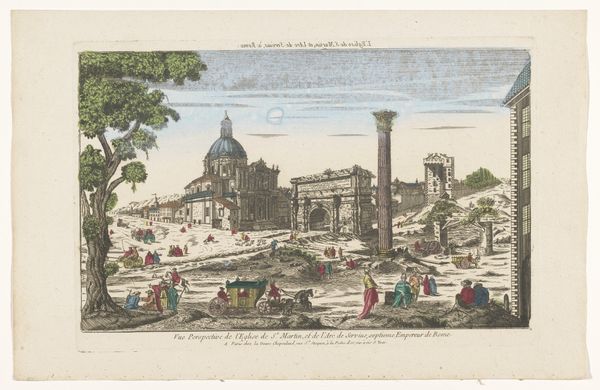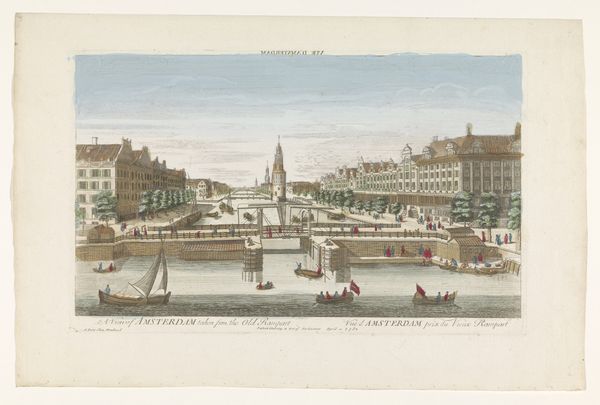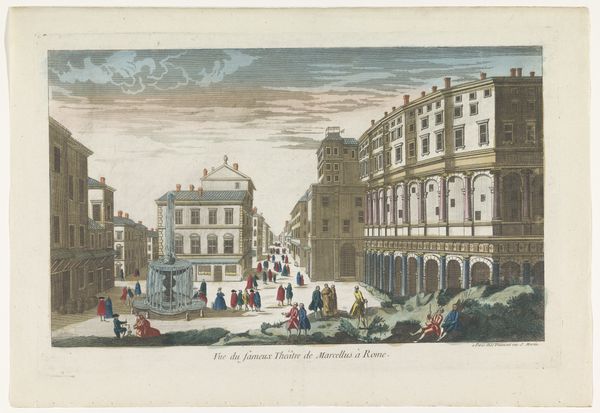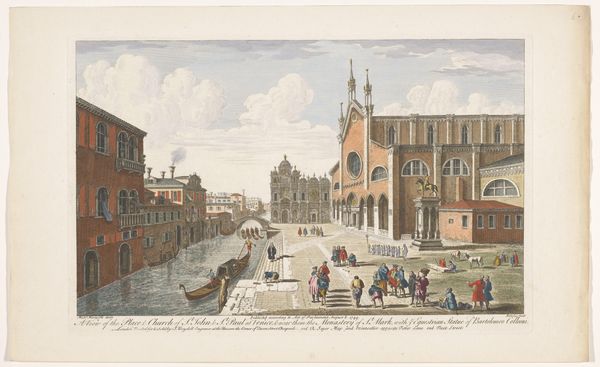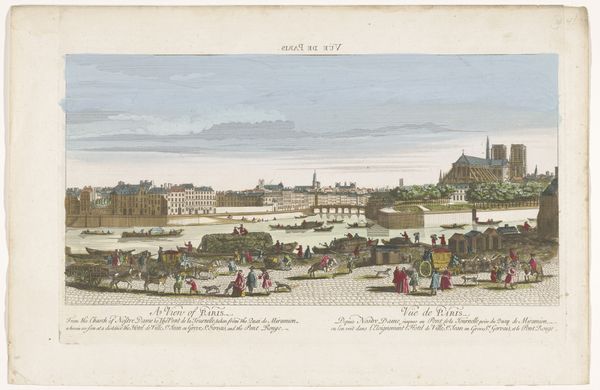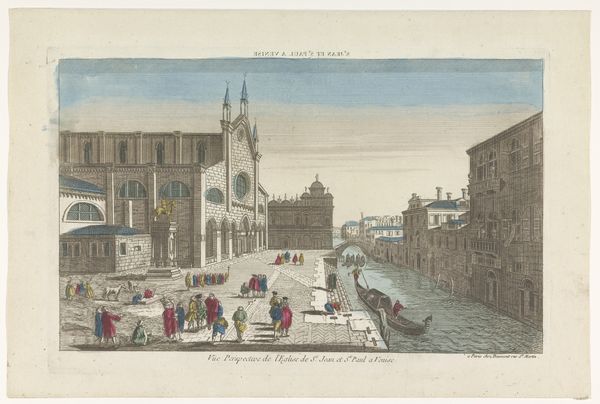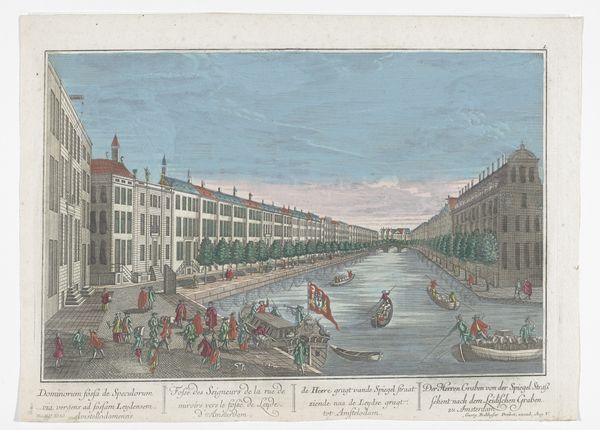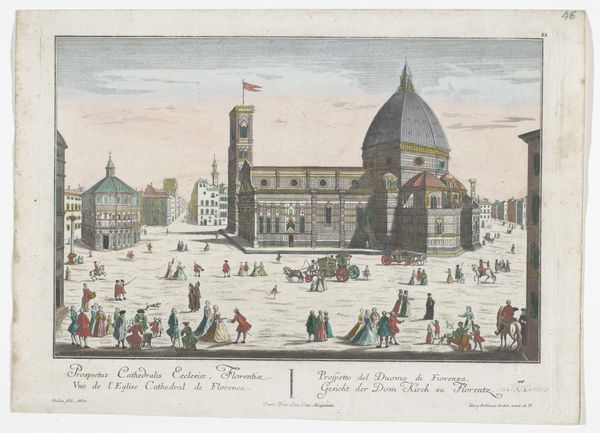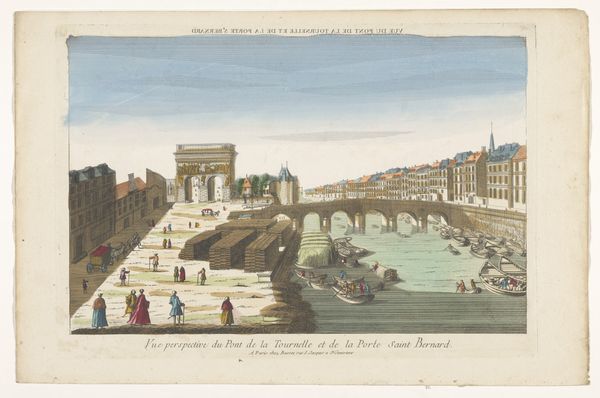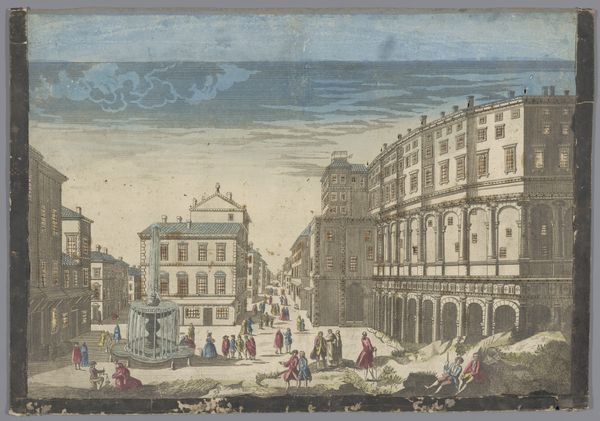
Gezicht op de kerk San Teodoro en het begin van de Canal Grande te Venetië 1745 - 1775
0:00
0:00
Dimensions: height 272 mm, width 424 mm
Copyright: Rijks Museum: Open Domain
Editor: Here we have Jean-François Daumont's "View of the Church of San Teodoro and the Beginning of the Grand Canal in Venice," created sometime between 1745 and 1775. It’s a watercolor painting, and what strikes me is the depiction of everyday life happening in this grand, architectural space. What are your initial thoughts about this work? Curator: Well, looking at Daumont's piece, I'm immediately drawn to how it illustrates the socio-economic forces at play in 18th-century Venice. Forget the idealized beauty – examine the materials: watercolor, easily reproducible engravings. What do they tell us about accessibility, about the market for these images? Notice the depiction of labour too – porters, vendors, the gondoliers. Their presence isn't incidental; it speaks to the very functioning of the city and how Venice presented itself through images for consumption, and its economic foundations. Editor: So you’re seeing the artwork almost as a record of the city's economy in action? Curator: Exactly. How were these images produced and disseminated? Were they luxury items or more widely available commodities? Consider too the architectural representation – it’s precise, almost mechanical. It highlights the industry involved in constructing and maintaining this powerful image of Venetian splendour to attract visitors and boost the local market. Editor: That's fascinating; I hadn't considered the engraving as a commodity itself. It puts a different spin on the idea of Venetian beauty. I’m definitely going to rethink how I consider the connection between materials and production with artworks now!
Comments
No comments
Be the first to comment and join the conversation on the ultimate creative platform.

